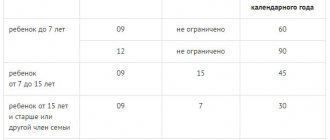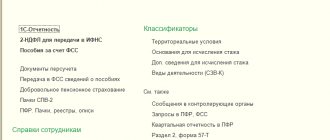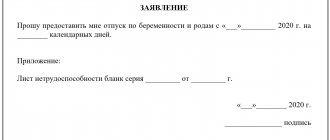Personnel are an irreplaceable resource for business. Without employees, it is very difficult to achieve real success. Personnel can be hired or engaged on the basis of a civil contract. Naturally, this raises the question: “How much taxes does the employer pay for the employee?”
The initial answer to this will be paradoxical: in accordance with the current legislation of the Russian Federation, the employer does not pay any taxes for employees. However, he is obliged to fulfill the duties of a tax agent for personal income tax and provide insurance for his employees and performers. We invite you to understand this difficult topic together.
What is personal income tax
Personal income tax is a tax on personal income. The person who received the income pays it at his own expense. In some cases, for example, when selling real estate and transport or when renting out an apartment, the responsibility to calculate and transfer personal income tax falls on the individual himself.
But if we are talking about income under an employment or civil contract, then the employer must withhold and remit the tax. In this case, he is a tax agent, a kind of intermediary between the employee and the budget. Moreover, violation of the duty of a tax agent is punished as strictly as failure to pay the tax itself (a fine of 20% of the unpaid amount).
The employer must give the employee his salary minus the withheld tax, i.e. Personal income tax is not paid from the funds of the organization or individual entrepreneur. This nuance must be taken into account when concluding a contract with an employee in order to avoid possible disputes. Indeed, often by the amount of wages an employee understands the amount that he will receive in his hands. And the employer means the size of the official salary before withholding personal income tax.
Free tax consultation
For example, the salary of a warehouse worker is 30,000 rubles. Let's calculate the personal income tax that the employer must withhold: (30,000 * 13%) = 3,900 rubles. This means that the worker will receive only 26,100 rubles. But in order for the amount she received to be 30,000 rubles, the contract must indicate that the official salary is 34,483 rubles.
The standard rate of personal income tax, which is withheld from payments to an employee, is set at 13%. It should also be taken into account that a tax resident of the Russian Federation has the right to deductions, that is, a reduction in taxable income.
Most often, employees use the standard deduction for children. Let's assume that the employee in the example above has one minor child, so she is entitled to a standard deduction in the amount of 1,400 rubles. In this case, personal income tax is calculated as follows: (30,000 – 1,400) * 13%) = 3,718 rubles. The amount in hand is 26,282 rubles, i.e. 182 rubles more than without applying the standard deduction. This is not much, but it is expected that from 2021 the amount of the standard deduction for the first and second child will increase from 1,400 rubles to 2,500 rubles per month.
In addition, many employees are entitled to social and property deductions, and much larger amounts appear there. You can receive such deductions through the Federal Tax Service, or by contacting your employer. If the deduction is claimed through the employer, then the amounts paid to the employee are not subject to income tax until a certain limit is reached. Deductions are of a declarative nature, so in each specific case it is necessary to figure out whether the employee has the right to them, and for how long personal income tax should not be withheld from his income.
Additional categories of payers
For individual entrepreneurs and workers without Russian citizenship, other rules for calculating contributions from salaries are provided.
Since 2021, individual entrepreneurs who do not have staff have received a new scheme for calculating taxes. Previously, the percentage depended on the minimum wage, but now the amounts have become fixed and are paid at the end of the calendar year. So, in 2021 they are introducing:
- Medical insurance – 5840 rubles.
- If the income for 12 months is more than 300 thousand rubles, then the pension contribution is 26,545 rubles.
People without Russian citizenship pay tax depending on their status and are also divided into several groups:
- Foreign workers with high qualifications pay the same percentage as all working Russian citizens - 13%.
- A fixed fee is established for a patent, so the employee pays it.
- If the employee is in refugee status, then his interest rate will also be 13%.
When the company’s employees do not belong to any of these groups, they will have to pay the 30% established for all non-residents of the Russian Federation. The table of payroll tax rates in 2021 can be found here:
Preferential rates
In the tax rate tables in 2021, the following groups of payers are the most popular. They can count on benefits when calculating the contribution from their salary:
- Companies in special economic zones. The pension rate for them is 13%, social – 2.9% and medical – 5.1%.
- Business companies with the simplified tax system, whose activities are listed in subparagraph 5,427 of the Tax Code, can be found by following the link. They make contributions only to the Pension Fund - 20%.
- Individual entrepreneurs with a patent should not charge anything. This rule applies to organizations engaged in non-profit and charitable activities on the simplified tax system, and to pharmaceutical companies with UTII.
- LLC in special economic zones - Vladivostok, Kaliningrad region, Crimea and others.
For more information about benefits on insurance premiums, you can refer to Article 427 of the Tax Code. The link to it is left above. More information about benefits can be found in the second table with the percentage of contributions from salary in 2021:
Table of reduced rates for different types of insurance (Article 427 of the Tax Code of the Russian Federation):
| Contribution payer category | Type of insurance premiums | Rate in percent |
| Business entities specializing in the implementation of development results (new types of intangible assets, which the founders of the enterprise own as property), business entities involved in the implementation of technical developments within the framework of contractual relations with the governing bodies of special economic zones (SEZs) | Pension contributions (PFR) | 20 (the abolition of the preferential tariff is planned for 2021) |
| Deductions from the income of employed citizens of the Russian Federation for social insurance (FSS) | 2,9 | |
| Social insurance contributions if the employee has foreign citizenship (FSS) | 1,8 | |
| Medical insurance (MHIF) | 5,1 | |
| Legal entities engaged in activities related to information technology (development, implementation and adaptation of software products) | For pension provision (PFR) | 8 |
| Funds allocated for social payments upon the occurrence of an insured event (FSS in relation to Russian citizens) | 2 | |
| Social insurance for employees with foreign citizenship (FSS) | 1,8 | |
| Medical insurance (MHIF) | 4 | |
| Organizations that pay crew members on operating vessels (provided that the vessel is listed in the Russian International Register of Ships) | All types of contributions | 0 |
| Legal entities and individual entrepreneurs who are participants in the SEZ or have resident status in relation to priority development territories, residents of the free port of Vladivostok and the Kaliningrad SEZ (legal entity) | For pension contributions (PFR) | 6 |
| Amounts accrued under the social insurance system (FSS) | 1,5 | |
| Compulsory Medical Insurance Fund | 0,1 | |
| Participants of the Skolkovo project | Pension Fund | 14 |
| FSS | 0 | |
| Compulsory Medical Insurance Fund | 0 | |
| Enterprises producing animation products | Pension Fund | 8 |
| Social insurance for Russian citizens (FSS) | 2 | |
| Social insurance (FSS from official earnings of foreign citizens) | 1,8 | |
| Medical insurance (MHIF) | 4 |
Exceptions and additions
The second property of a good tax system is usually the absence of a large number of clarifications, additions, and exceptions. This is done so that any ordinary citizen can easily understand the basic framework of their country's tax system and understand whether management is managing their money effectively.
Here are some of the most commonly used rules, according to which payers give a percentage of their personal funds to the state:
- The employer will pay additional interest to the Pension Fund if the enterprise is harmful. The payment amount is fixed.
- Advance payments that are made at the end of the month rather than in the middle are taxable. This is the cause of great disputes between business and the Pension Fund.
An additional feature of the Russian taxation system is that it takes into account a large number of different deductions.
These include social, standard, property, investment. Such deductions go from the amount of earnings and only then the contribution is calculated from it. Deductions are also expected for children. If the necessary application is received, then for the first two children - 1,400 rubles for each, starting with the third - 3,000 rubles for each. 12,000 rubles if the child is disabled, under 18 or 24 years old. They are multiplied by 2 if the parent is single.
Working people who also receive a pension are not exempt from paying taxes in Russia. They also pay income and other taxes, but are entitled to tax breaks and deductions specifically for retirees.
Preferential deductions:
- 3000 rubles for combatants and those who received radiation sickness.
- 500 rubles for heroes of Russia and the USSR, disabled people of the 1st and 2nd groups and others.
There are also special tax rates for narrow areas:
- For 10 years after registration, Skolkovo residents contribute only 14% to the Pension Fund.
- For the same number of years after registration, a special rate applies to residents of the SEZ - Crimea, Sevastopol, Vladivostok and others. Here you pay 6% for pension insurance, 1.5% for social insurance and 0.1% for medical insurance.
- The crews of ships in the Russian International Register do not make insurance contributions from accrued salaries.
Insurance premiums for employees
Russia has a compulsory insurance system for individuals, the main participants of which are employees and their employers. Insurance premiums, unlike personal income tax, are paid at the expense of employers at the following rates:
- pension insurance – 22%;
- health insurance – 5.1%;
- social insurance for temporary disability and maternity – 2.9%.
As you can see, the total rate of mandatory insurance contributions for employees is 30% of the amounts paid to them. Only some income listed in Article 422 of the Tax Code of the Russian Federation is not subject to contributions. However, from April 2021, rates for payments above the minimum wage have been reduced, so the total amount of contributions from them is not 30%, but 15%.
In addition to the aggregate tariff, employers pay another contribution for employees under employment contracts - for insurance for injuries and occupational diseases. Here the contribution rate depends on the professional risk class of the employer’s main activity and ranges from 0.2% to 8.5%.
If an employee is hired under a civil contract, then it is mandatory to make contributions only to pension and health insurance. The provision for social insurance and insurance against injuries and occupational diseases is indicated in the civil process agreement at the request of the parties.
Plans for 2021
In October 2021, you can already get acquainted with the plans of the Ministry of Finance for the future. It is noted that all the information in the published document about the main directions of budget policy also concerns the plan for 2021 and 2021. You can download and read it in full at this link.
Basically, no major amendments are expected. The main points are:
- The insurance premium rate remains at 30%.
- The accounting procedure for unified agricultural tax will be simplified.
- The rules for the joint use of UTII and PSN are being clarified.
- Individual entrepreneurs are exempt from declaring their estimated income.
- Increase in minimum wage.
- Changes in payment of state fees for business registration.
- 3% of the contribution from profits will still go to the regions and 17% to the treasury.
- Changes in the conditions of excise taxes.
- Testing a new tax system for self-employed people in some regions.
One of the most important changes in the financial sector, which will come into force on January 1, 2021, is VAT. Now it will be not 18, but 20%.
Even such a simple payment as payroll tax has many clarifications and additions, which are very easy to get confused. However, if necessary, you can easily figure it out - the main thing is to carefully study the necessary articles of the Tax Code of the Russian Federation and be aware of the latest changes in the system, if any are introduced. Now there are many useful articles, for example, with tables of salary tax percentages in 2021.
Why are employee contributions called taxes?
In fact, the question of what taxes the employer pays for the employee has a real basis. After all, once upon a time, instead of contributions, employers paid a tax for employees, which was called UST.
The unified social tax was applied in Russia from 2001 to 2010. The general UST tariff was 26% and was divided as follows:
- to the Pension Fund - 20%;
- to the Social Insurance Fund - 3.2%;
- to the Federal Compulsory Medical Insurance Fund - 0.8%;
- to territorial compulsory health insurance funds - 2%.
For the UST there was a regressive scale, i.e. As the employee's salary increased, the tax rate decreased. As you can see, insurance premiums, compared to the unified social tax, are collected at higher rates, and instead of a regressive scale, a maximum base for calculating contributions is used.
Interestingly, after the administration of insurance premiums in 2021 was transferred to the Federal Tax Service, they again started talking about a possible return of the unified social tax. But in the end, everything was left as it is - the employer pays contributions, not taxes, for his employees.
Responsibility for non-payment of tax and deadlines
The taxes described above are one of the main ones, so they must be submitted on time and there is serious responsibility. Thus, all payroll taxes are paid monthly. They are accrued no later than the day when all employees receive their salaries for the month. The contribution must be made at the place of registration, however, if the company has divisions separate from each other, then payments for their employees are made to the attached branches of the Federal Tax Service.
Sometimes it happens that the employer, when calculating insurance premiums:
- Reduced the computing base, not including quarterly bonuses and other similar payments.
- Incorrectly calculated the contribution amount. For example, you used the wrong tax rate.
- Made illegal manipulations with insurance premiums or did not take them into account at all.
This leads to the fact that there is a shortfall in the insurance premium - it is either incomplete or there is none at all.
Based on this, tax authorities demand to pay not only the amount required by law, but also a penalty or fine. The fine will be 20% or 40% of the contribution amount, depending on whether the error was intentional or not. If all the documentation is filled out correctly, but the payment is late, this is not punishable by a fine, but a penalty will be imposed. For each overdue day - 1/300 of the Central Bank key rate. As of October 2021, it is 7.5%. From the 31st day of delay in payment, penalties are calculated as 1/150 of the unpaid amount daily.
Results
- Formally, the employer does not pay taxes at all for employees, but at his own expense makes mandatory payments in the form of insurance contributions.
- Insurance premiums transferred for employees are taken into account when calculating business taxes in all taxation systems.
- Payroll taxes are withheld from the employee’s income, and the employer only transfers personal income tax to the budget.
- When calculating the wage fund, it is necessary to include the costs of employee insurance.
- An employer pays less insurance premiums for an employee if he is hired under a civil law contract, but to enter into such an agreement one must have good reasons. Unreasonable replacement of an employment contract with a civil one is prohibited by law.
Basic tax deductions from employees
The main tax paid from wages is on the income of individuals. It is also called income tax or simply personal income tax. It is included in the salary amount and, according to the law, all employees pay it themselves, and the employer only transfers this money to the tax office. De facto, the withholding and transfer of personal income tax occurs almost automatically.
How much interest the payroll tax will be in 2021 depends on the payer’s status:
- Citizens who have been in the country for more than 183 days over the past 12 months pay 13%.
- Those who have been in the Russian Federation for less than this period during the year give 30% to the state.
There is a small clarification here that if a person left the territory of the Russian Federation for a period of less than 6 months for training or treatment, then he will not be counted in these 183 days.
Rates are relevant for everyone; a small group of categories of persons may benefit from changes to this rule. Thus, the following income is not taxed:
- Benefits – unemployment or maternity benefits.
- Severance pay, which must be accrued upon dismissal. Paid within 2 months after it, even if the former employee registered with the labor exchange. This is the average monthly salary.
- Some payroll items are mainly compensation for material or moral damage, harm to health, unused vacations, etc.
In order to calculate the salary, you can use special online calculators.








